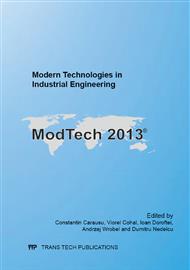p.3
p.9
p.16
p.22
p.28
p.33
p.39
p.43
Failure Mode and Effects Analysis on Control Equipment Using Fuzzy Theory
Abstract:
Failure Mode and Effects Analysis is a methodology to evaluate a system, design, process, machine or service for possible ways in which failures (problems, errors, risks and concerns) can occur and it has been used in a wide range of industries. Traditional method uses a Risk Priority Number to evaluate the risk level of a component or process. This is obtained by finding the multiplication of three factors, which are the severity of the failure (S), the probability/occurrence of the failure (O), and the probability of not detecting the failure (D). There are significant efforts which have been made in FMEA literature to overcome the shortcomings of the crisp RPN calculation. Fuzzy logic appears to be a powerful tool for performing a criticality analysis on a system design and prioritizing failure identified in analisys FMEA for corrective actions. In this paper we present a parallel between the typical and the fuzzy computation of RPNs, in order to assess and rank risks associated to failure modes that could appear in the functioning of control equipment.
Info:
Periodical:
Pages:
16-21
Citation:
Online since:
November 2013
Authors:
Keywords:
Price:
Сopyright:
© 2014 Trans Tech Publications Ltd. All Rights Reserved
Share:
Citation:


